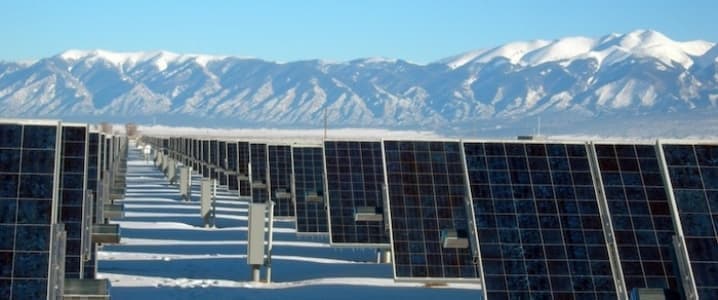Renewable energy capacity is set to grow by 50 percent by 2024, according to a new report from the International Energy Agency (IEA).
In capacity terms, the world will install another 1,200 gigawatts (GW) of renewable energy over the next five years, which is equivalent to the total installed power capacity of the entire United States.
Renewable energy capacity additions are expected to rebound sharply this year, after a disappointing year in 2018. In 2019, renewable energy is set to grow by 12 percent, the fastest rate in four years, according to the IEA. Renewables are quickly becoming cheaper than coal in most of the world.
The report says that solar PV really starts to take on a greater role going forward, accounting for 60 percent of the expected growth, while wind only accounts for a quarter. That is a departure from the past. A decade ago, onshore wind led the way initially, aided by lower costs. But the cost of solar has plunged in recent years, and more policy support has helped it continue to gain ground.
The agency estimates that costs for solar PV will decline by another 15 to 25 percent for both utility-scale solar and for distributed projects over the next few years.
Critics have long said that while renewable energy offers environmental benefits, they simply cannot compete with fossil fuels. That is not only an outdated argument, but it is actually completely backwards in many cases. “Recent competitive auction results indicate that the levelised cost of generation for utility-scale solar PV plants will become comparable with or lower than that of new fossil fuel plants sooner than expected in a growing number of countries,” the IEA said. Related: Dreams Of An Aramco IPO Are Fading Fast
Intriguingly, distributed solar becomes an increasingly mainstream option. “Distributed PV's potential is breathtaking, but its development needs to be well managed to balance the different interests of PV system owners, other consumers and energy and distribution companies,” IEA executive director Fatih Birol said.
Moreover, the IEA is known for its conservative reputation, repeatedly over-predicting oil demand and under-predicting the pace of growth for renewable energy. So, it’s somewhat notable that even the IEA says that solar and wind outcompete fossil fuels on price alone.
But others go much further. A September report from the Rocky Mountain Institute finds that renewable energy already beats out new natural gas-fired power plants on price. But by the mid-2030s, it will be cheaper to build new solar and wind than it will be to simply run existing gas plants, let alone build new ones.
“Our study finds that 90 percent of new gas-fired capacity proposed for construction in the next five years could be cost-effectively avoided with [clean energy portfolios],” the report concluded. “Prioritizing clean energy investment in these cases would unlock $29 billion in net customer savings and avoid 100 million tons of CO2 emissions each year—equivalent to 5 percent of current US electricity-sector emissions.” Related: Is Eating Meat Worse Than Burning Oil?
Earlier this year, Portugal reported several winning bids in an auction for renewable energy, awarding projects with costs of 0.0147 euros per kilowatt-hour, the lowest recorded cost in the world. Natural gas projects easily cost two or three times that amount.
Nevertheless, despite the progress and the expected growth of renewables, the IEA says the world is not on track to meet climate targets. Annual deployment needs to essentially double from the current pace. The report says that three overarching hurdles stand in the way of faster growth: policy and regulatory uncertainty, high investment risks and the ability to integrate steadily higher concentrations of renewables into the grid.
“Renewables are already the world's second-largest source of electricity, but their deployment still needs to accelerate if we are to achieve long-term climate, air quality and energy access goals,” said Dr Fatih Birol, the IEA’s Executive Director.
By Nick Cunningham of Oilprice.com
More Top Reads From Oilprice.com:
- Russia Predicts The Death Of U.S. Shale
- Oil Rebounds On Rare Market Optimism
- The OPEC Oil Price Jawboning Has Officially Begun


















